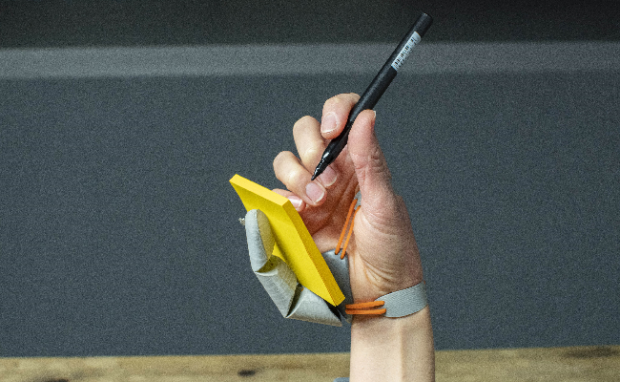Sixth finger: Study shows we can adapt to having a third thumb
Giving someone the finger takes on a whole new meaning, thanks to scientists Dani Clode and Tamar Makin. They recently explained to NPR whether people could handle having a third thumb. Believe it or not, they discovered people could control an additional digit as if it were a natural body part. Also, our brains and behaviors adjust to these prosthetics!
Science and technology advance rapidly, so more outrageous experiments should emerge. The Third Thumb is one of those projects that expand our understanding of how the human mind works. Soon, Clode and Makin’s research may change how people learn psychology in school. Even better, it could lead to future cybernetic enhancements.
This article will discuss what Tamar Makin and Dani Clode learned about the human mind after letting people wear a Third Thumb. Later, I will cover other studies similar to the sixth finger experiment.
Why add a sixth finger to someone’s hand?
Prosthetic designer Dani Clode and neuroscientist Tamar Makin wanted to understand how humans will respond to having an additional body part. Hence, they started the Third Thumb experiment.
Makin told NPR, “We thought the maybe most important first question for us is to understand how extensive use of an extra body part going to change the way the brain represents and controls your own biological one.” Also, Clode’s website elaborates on their project further.
Dani Clode said the origin of the term “prosthesis” means “to add or put onto.” Similarly, the Merriam-Webster dictionary website says it is another version of the Greek word “prostithenai.”
You may also like: Samsung screen monitors blood pressure
It is a portmanteau of “pros,” meaning “in addition to,” and “tithenai,” meaning “to put.” Yet, most people associate prosthetic limbs with fixing or replacing lost body parts.
If we follow that original definition, prostheses should extend our faculties, not repair or substitute them. “The project is inspired by this word origin, exploring human augmentation and aiming to refrain prosthetics as extensions of the body.”
Clode and Makin published their findings in the Science Robotics journal. Check for more information about their project, or stick around for my simpler explanation.
How does the Third Thumb function?

Photo Credit: ucl.ac.uk
The Third Thumb is a 3D-printed prosthetic thumb you attach to your hand with two bands. It doesn’t link to your nerves, so don’t worry about having surgery for a sixth finger!
You control it with a device attached to your “big toe.” The gadget links to the Third Thumb via Bluetooth so that it can mimic the toe’s movement. Your toe can move the prosthetic up and down and furl it to grab things.
Aaron Scott, host of the NPR podcast “Short Wave,” said, “The third thumb enables two basic types of movements. It can either hold something against the wearer’s hand like a jar, and then the wearer can use their fingers and first thumb to say, unscrew the lid of that jar and dip a spoon in.”
“The third thumb can also collaborate with nearby fingers to pinch and manipulate things so that your hand could say, pinch two things at once,” he added. The American Association for the Advancement of Science posted a video showing how people used the Third Thumb.
You may also like: Japan unveils 15-foot-tall transforming robot
The clip showed folks grabbing multiple drinking glasses after training in one to five days. Also, it featured people opening a bubble can and picking up the bubble wand while the sixth finger held the former in place.
Another became so dexterous in using the prosthetic that they could pass a thread through a needle while the Third Thumb held it down. More importantly, Danielle Clode said the prosthetic changed how people’s brains worked.
She and her team scanned brains via fMRI (functional Magnetic Resonance Imaging) and discovered they fired neurons for moving the additional digit. As a result, our bodies may have the potential for prosthetic augmentation.
Conclusion
Dani Clode and Tamar Markin created the Third Thumb prosthetic to understand how people respond to additional body parts. Fortunately, their study showed we could handle additional limbs.
The University of Tokyo had a similar project called Jizai Arms. The research team discovered people could familiarize themselves with having four additional arms.
It may seem weird, but these projects may expand our bodies’ limitations, enabling us to perform more tasks in a limited time. Learn more digital tips and trends at Inquirer Tech.